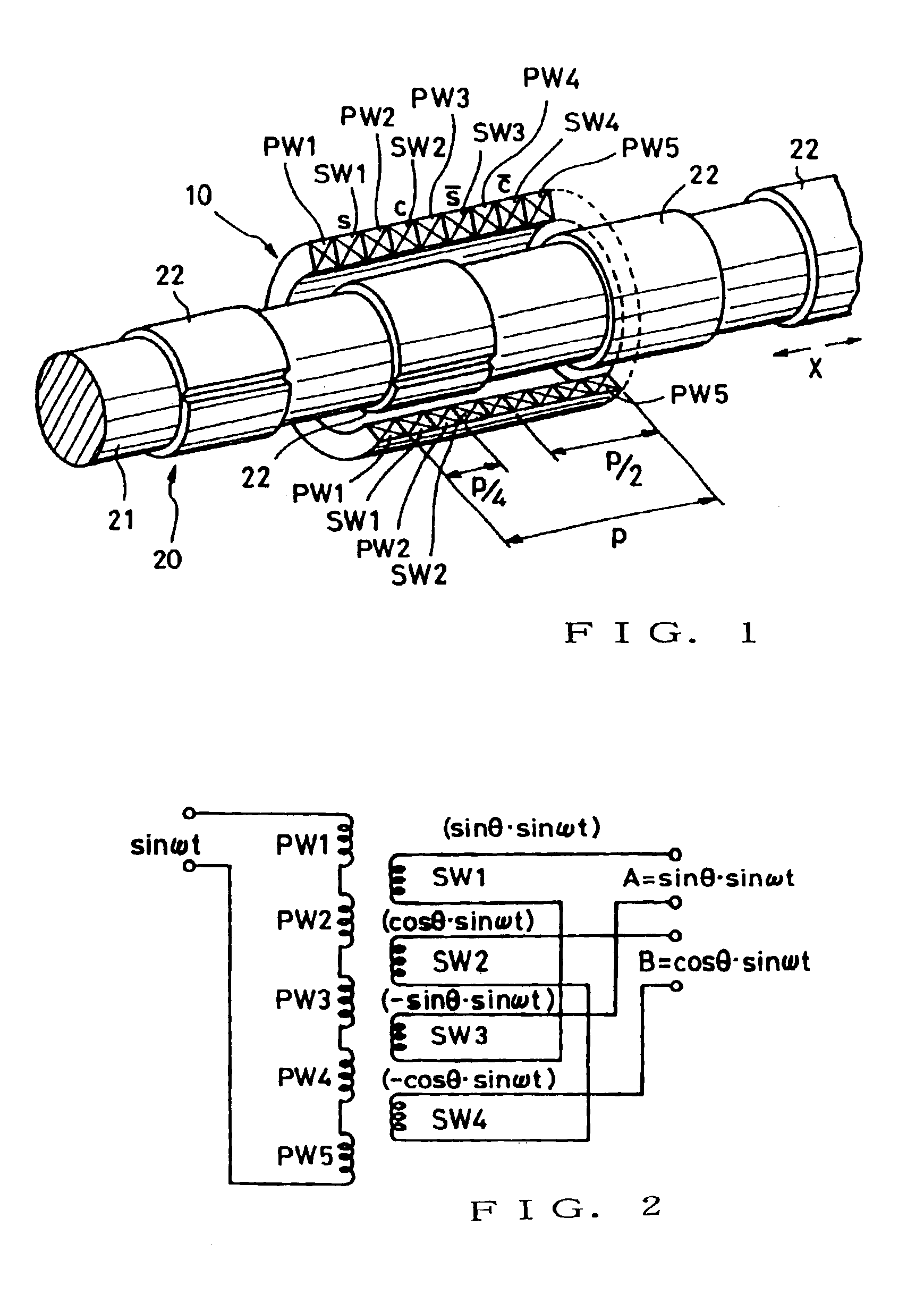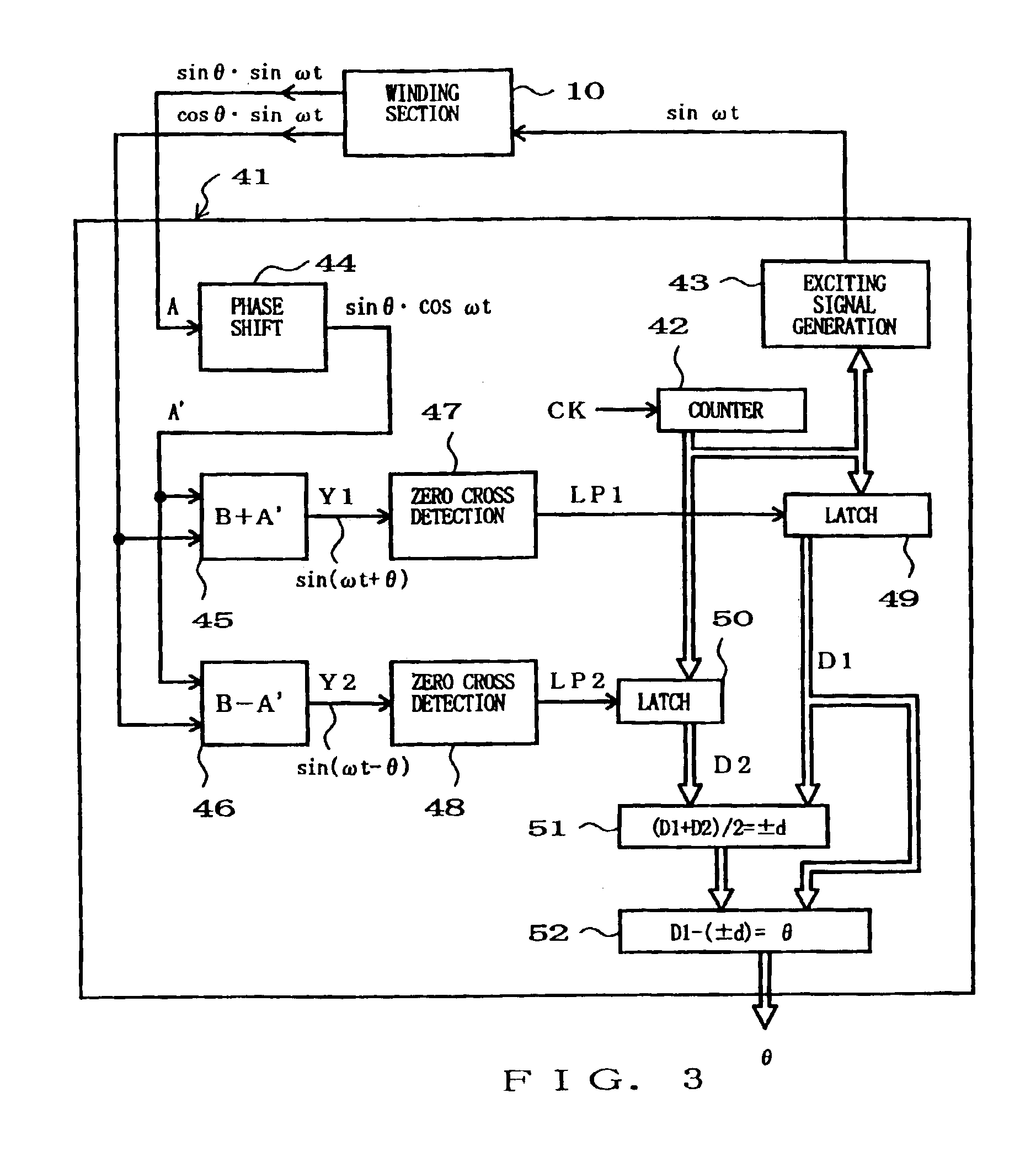Phase difference detection device and method for a position detector
a detection device and position detector technology, applied in the direction of instruments, data switching networks, electric controllers, etc., can solve the problems of increasing the number of detection-signal transmitting lines, directly appearing as detection errors, etc., to achieve superior high-speed response characteristics, simplify detection-signal transmission lines, and minimize adverse influences of external disturbances
- Summary
- Abstract
- Description
- Claims
- Application Information
AI Technical Summary
Benefits of technology
Problems solved by technology
Method used
Image
Examples
Embodiment Construction
[0040]FIG. 1 is a perspective view of an example of a linear position detector device which is applicable to a phase difference detection device according to the present invention. The linear position detector device generally comprises a winding section 10 and a variable magnetic coupling section 20. The variable magnetic coupling section 20, which is coupled to a predetermined mechanical system (not shown) that is an object of detection by the detector device, is capable of linearly reciprocating in response to a varying linear position of the mechanical system. On the other hand, the winding section 10 is positionally fixed in a suitable manner. Thus, the variable magnetic coupling section 20 linearly moves relative to the winding section 10, in response to a varying linear position of the mechanical system to be detected (object of detection). Conversely, the winding section 10 may be constructed to move in response to a varying linear position of the mechanical system to be det...
PUM
 Login to View More
Login to View More Abstract
Description
Claims
Application Information
 Login to View More
Login to View More - R&D
- Intellectual Property
- Life Sciences
- Materials
- Tech Scout
- Unparalleled Data Quality
- Higher Quality Content
- 60% Fewer Hallucinations
Browse by: Latest US Patents, China's latest patents, Technical Efficacy Thesaurus, Application Domain, Technology Topic, Popular Technical Reports.
© 2025 PatSnap. All rights reserved.Legal|Privacy policy|Modern Slavery Act Transparency Statement|Sitemap|About US| Contact US: help@patsnap.com



